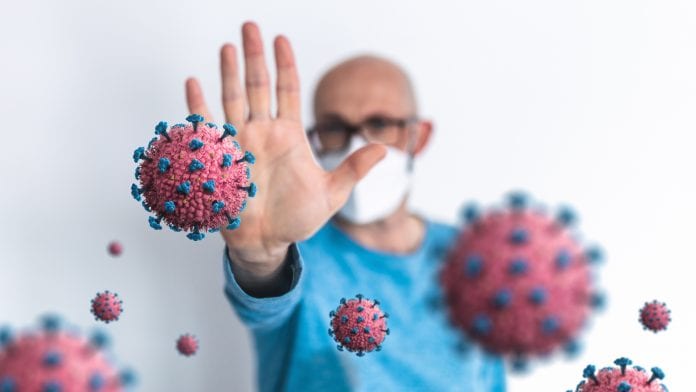
A group of researchers have used advanced simulations to reveal how air conditioning contributes to the spread of COVID-19.
Following a restaurant COVID-19 outbreak in China, Jiarong Hong and colleagues at the University of Minnesota have used advanced computational fluid dynamics tools on supercomputers to deepen understanding of transmission and provide a quantitative assessment of how different environmental factors influence transmission pathways and airborne infection risk.
These advanced simulation methods allowed the team to capture the complex flows that occur when the cold airflow from air conditioners interacts with the hot plume from a dining table and the transport of virus-loading particles within such flows.
The study has been published in Physics of Fluids from AIP Publishing.
Aerosol spread indoors
The restaurant outbreak was widely reported as having strong evidence of airflow-induced transmission of COVID-19, with some people becoming infected while others in the same area did not. The team set out to discover what specific role ventilation and air conditioning played in transmission of the virus to help develop preventative infection control measures to improve safety.
Hong said: “Our simulation captures various physical factors, including turbulent air flow, thermal effect, aerosol transport in turbulence, limited filtration efficiency of air conditioners, as well as the complex geometry of the space, all of which play a role in airborne transmission.”
Although many computer simulation studies of airborne transmission of COVID-19 have been conducted recently, few directly link the prediction of high-fidelity computational fluid dynamics simulation with the actual infection outbreaks reported through contact tracing.
The results revealed a direct linkage between regions of high aerosol exposure index and the reported infection patterns within the restaurant. By using flow structure analysis and reverse-time tracing of aerosol trajectories, the researchers further pinpointed two potential transmission pathways that are currently being overlooked: the transmission caused by aerosols rising from beneath a table, and transmission due to re-entry aerosols associated with limited filtration efficiency of air conditioners.
“Our work highlights the need for more preventive measures, such as shielding properly underneath the table and improving the filtration efficiency of air conditioners,” Hong added.
“More importantly, our research demonstrates the capability and value of high-fidelity computer simulation tools for airborne infection risk assessment and the development of effective preventive measures.”










